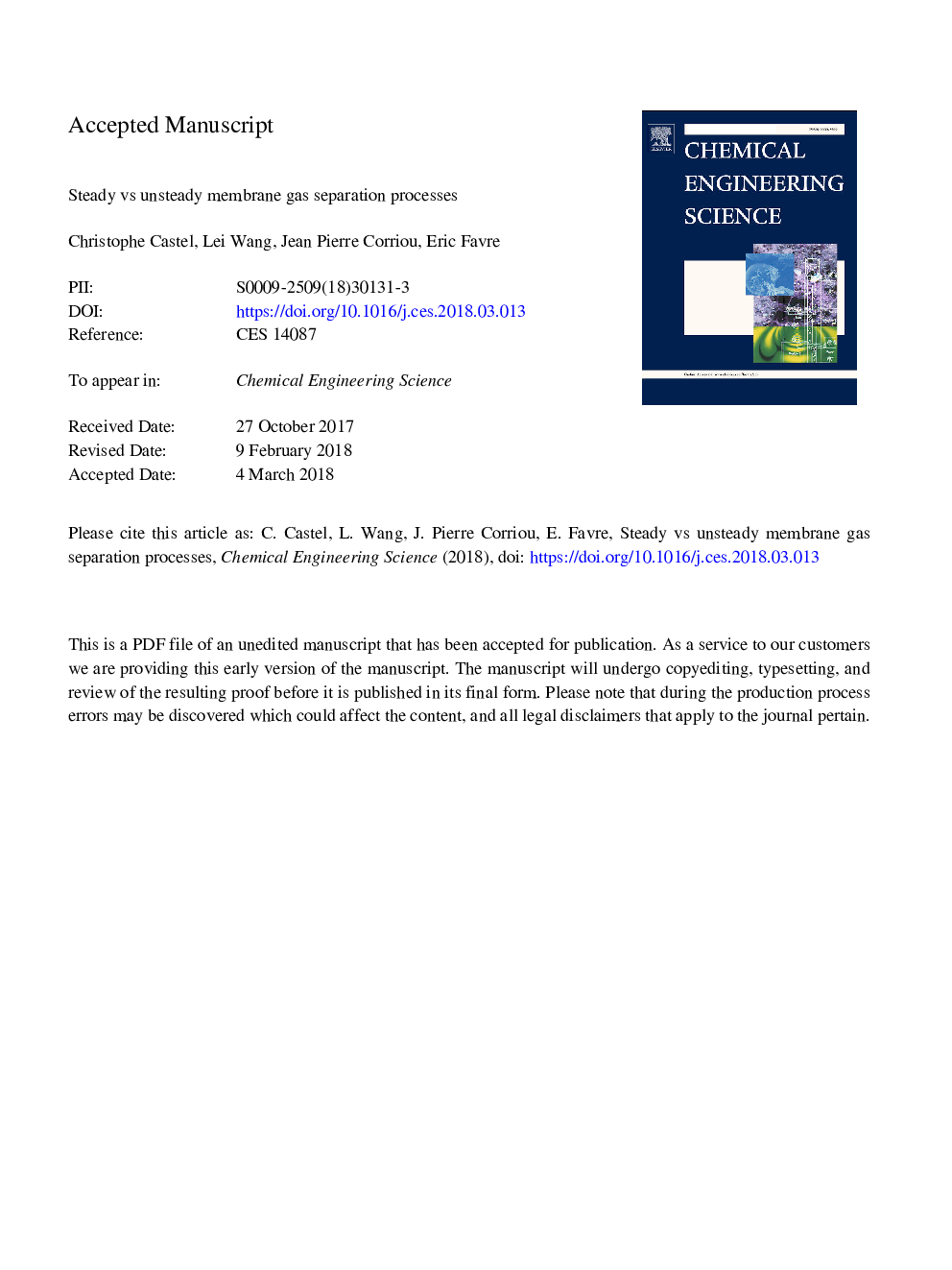| Article ID | Journal | Published Year | Pages | File Type |
|---|---|---|---|---|
| 6588533 | Chemical Engineering Science | 2018 | 43 Pages |
Abstract
Nowadays, membrane processes are together with cryogeny, absorption and adsorption considered to be a key technology for gas separation applications. Process selectivity is of primary importance in order to respect the specifications but can in some cases be limited due to a too low membrane selectivity. Parallel to improvements in the membrane selectivity of certain materials, unsteady membrane operations can also be attempted in order to achieve a higher separation selectivity, but this strategy remains largely unexplored. A novel, simple, unsteady-state process, complementary to the strategies already proposed by the previous authors, is reported in this study. A systematic comparison of steady state, short-class (i.e. with time lag) and long-class (i.e. pseudo steady-state) processes is described for O2/N2 (PPO membrane), He/Kr (PEMA membrane) and H2/CO2 (polyimide and a reverse selective PEBAX membrane) separations. Based on a selectivity composition path chart, the maximal purity or process selectivity achievable by steady and unsteady processes was compared. The new long-class process was shown to offer similar or increased selectivity compared to steady-state operation, at the expense of a lower productivity. Finally, the applicability to industrial separations and the remaining challenges are also discussed.
Related Topics
Physical Sciences and Engineering
Chemical Engineering
Chemical Engineering (General)
Authors
Christophe Castel, Lei Wang, Jean Pierre Corriou, Eric Favre,
